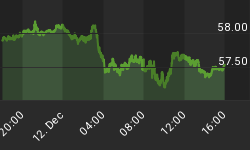A crucial component to many processes is the catalyst. It really has nothing to do with the process, but the presence of the catalyst acts an enabler. Greece may have been one of those catalysts. In terms of the world, Greece has no economic meaning. Greece is way out in the decimals. Economic problems of California are certainly larger. Yet, no one is buying Gold because of the end of the California dream. No one is talking about the dissolution of the U.S. because of the economic collapse of California, Illinois, and New Jersey.
Where Greece is important is in ending the decades of economic damage done by Keynesian dogma. Greece had become one of the great success stories for Keynesianism. The nation lived off of debt, and illusions of wealth. Borrowed money was used to pay government workers and reward pensioners after a few short years of work. Bond markets suddenly discovered that Greece may never be able on its own to repay that debt. Hyman Minsky would have referred to today's governments as Ponzi borrowers. Bond market did as it should with near bankrupt Keynesian economies. It turned off the money.
The panic, or crisis if there is one, is that governments across Europe, and the Obama Regime, can not accept the idea of markets disciplining governments. Imagine the panic in halls of government all around the world as politicians ponder governing without borrowed money with which to buy votes. Government debt is nothing more than legitimized vote buying by politicians. That, in fact, is the essence of Keynesian dogma, and it is the real crisis about which politicians are so concerned.
Like all great economic crises, this one too will probably be a disappointment. Economic world will not end, though the economic fantasy land of Keynesianism may indeed wilt. That, however, will be on the back side of the crisis. Today we seem to still be on the front side of the crisis. Crises, like all hills, mole or real, have a front side and a back side. Front side is all emotional and panic filled. On the front side are created outrageous forecasts in order to spur web site traffic. From the viewpoint of Gold investors, Greek crisis has added to parabolic rise evident in the chart below.

All parabolic market moves end with severe disappointment. Makes no difference if the asset is internet stocks or fertilizer. Parabolic rises inevitably fail because they are unnatural. Imagine throwing a ball into the air. Gravity slowly gains control. Momentum of the ball declines till the ball starts to fall. In a parabolic rise, momentum increases as the asset price rises. Parabolic rises defy financial gravity. And yes, I know this time is different. This time has been different how many times in my life?
Parabolic structures have three components. First, is the unnatural rise, driven by emotions rather than the head. As Gold investing has become mainstream, it has become more subject to emotions. Greek crisis and expectations of an imminent collapse of the EU are indicative of such an emotional state. Investors are buying Gold, not because of the merits of owning Gold, but because they "know" the price of Gold is going up. Australian investors are not buying Gold because of imminent collapse of the EU, but because the price of Gold is going up.
Second component is the grand disappointment stage. It manifests itself with the "deer in the head light" expression on the faces of speculators as they check the morning price indications. Instead of being richer each day with retirement calculated to the day, they wait for the margin call. Screams of manipulation will ring loudly, like the death screams of some hideous monster of the night.
Final component is a long lateral trading period where the asset is transferred from weak hands to strong hands. That period is also indicated in the above chart by the box. It is in this period where investors make purchases that will be most rewarding in the future. That lateral pattern is probably the most powerful of technical market patterns. Wise investors buy during such patterns. When an asset exits a lateral pattern such as being described, the subsequent move is usually quite dramatic.
Well, that lays out the structure and resolution of parabolic patterns. Several important matters have been thus far ignored. Does the Greek crisis signal an imminent end to Gold's parabolic rise? If not, what will? How low will$Gold fall during the disappointment phase? How long will the lateral pattern last in terms of time? At what price will Jon Nadler become publicly bullish on $Gold?
With the Gold market in over heated status, investors may want to consider precious metal alternatives. One of those is Rhodium, a truly rare metal. Price of Rh relative to Au may be more attractive at the present time. We have initiated a Rhodium research effort. Note that it is infancy. You may read our initial musings on Rh at: ![]() www.valueviewgoldreport.com/files/Rhodium_18_May_2010.pdf
www.valueviewgoldreport.com/files/Rhodium_18_May_2010.pdf
GOLD THOUGHTS come from Ned W. Schmidt,CFA,CEBS as part of a joyous mission to save investors from the financial abyss of paper assets. He is publisher of The Value View Gold Report, monthly, and Trading Thoughts, about weekly. To receive these reports, go to: www.valueviewgoldreport.com.
















